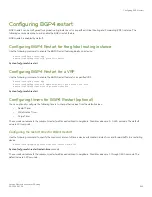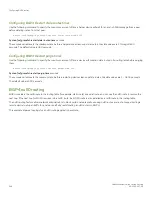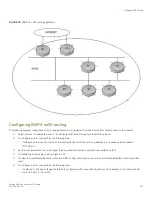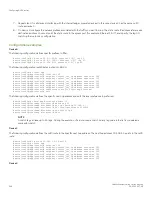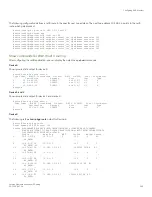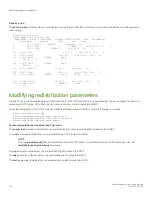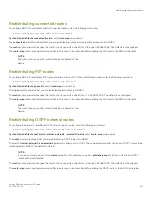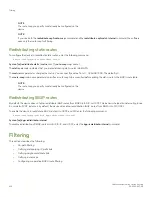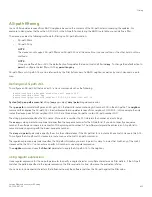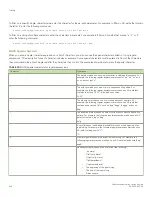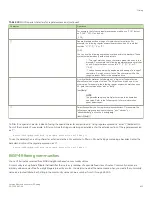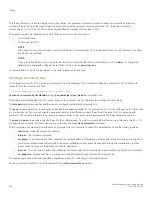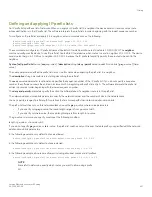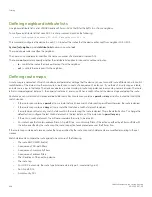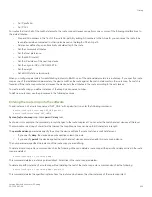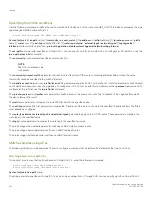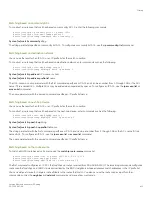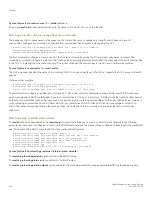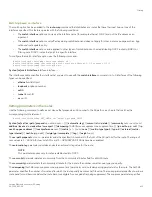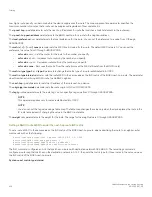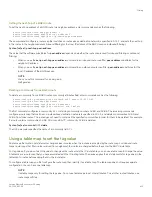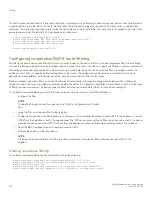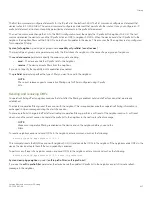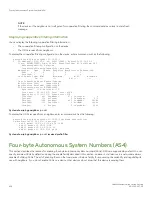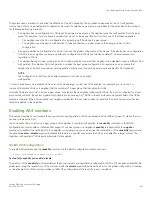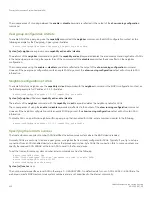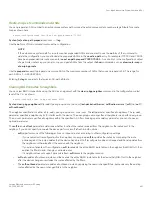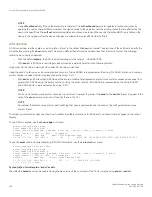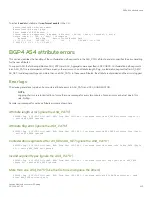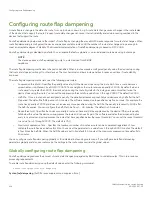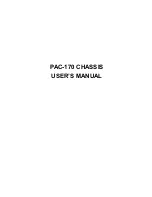
•
An IP prefix list
•
An IP ACL
For routes that match all of the match statements, the route map set clauses can perform one or more of the following modifications to
the route attributes:
•
Prepend AS numbers to the front of the route AS-path. By adding AS numbers to the AS-path, you can cause the route to be
less preferred when compared to other routes based on the length of the AS-path.
•
Add a user-defined tag an automatically calculated tag to the route.
•
Set the community attributes.
•
Set the local preference.
•
Set the MED (metric).
•
Set the IP address of the next-hop device.
•
Set the origin to IGP or INCOMPLETE.
•
Set the weight.
•
Set a BGP4 static network route.
When you configure parameters for redistributing routes into BGP4, one of the optional parameters is a route map. If you specify a route
map as one of the redistribution parameters, the device matches the route against the match statements in the route map. If a match is
found and if the route map contains set clauses, the device sets the attributes in the route according to the set clauses.
To create a route map, you define instances of the map by a sequence number.
To define a route map, use the procedures in the following sections.
Entering the route map into the software
To add instance 1 of a route map named "GET_ONE" with a permit action, enter the following command.
device(config)# route-map GET_ONE permit 1
device(config-routemap GET_ONE)#
Syntax:
[no] route-map
map-name
permit
|
deny
num
As shown in this example, the command prompt changes to the route map level. You can enter the match and set clauses at this level.
The
map-name
is a string of characters that names the map. Map names can be up to 80 characters in length.
The
permit and deny
parameters specify the action the device will take if a route matches a match statement:
•
If you specify
deny
, the device does not advertise or learn the route.
•
If you specify
permit
, the device applies the match and set clauses associated with this route map instance.
The
num
parameter specifies the instance of the route map you are defining.
To delete a route map, enter a command such as the following. When you delete a route map, all the permit and deny entries in the route
map are deleted.
device(config)# no route-map Map1
This command deletes a route map named Map1. All entries in the route map are deleted.
To delete a specific instance of a route map without deleting the rest of the route map, enter a command such as the following.
device(config)# no route-map Map1 permit 10
This command deletes the specified instance from the route map but leaves the other instances of the route map intact.
Filtering
FastIron Ethernet Switch Layer 3 Routing
53-1003627-04
409
Summary of Contents for FastIron SX 1600
Page 2: ...FastIron Ethernet Switch Layer 3 Routing 2 53 1003627 04 ...
Page 16: ...FastIron Ethernet Switch Layer 3 Routing 16 53 1003627 04 ...
Page 20: ...FastIron Ethernet Switch Layer 3 Routing 20 53 1003627 04 ...
Page 142: ...FastIron Ethernet Switch Layer 3 Routing 142 53 1003627 04 ...
Page 150: ...FastIron Ethernet Switch Layer 3 Routing 150 53 1003627 04 ...
Page 200: ...FastIron Ethernet Switch Layer 3 Routing 200 53 1003627 04 ...
Page 214: ...FastIron Ethernet Switch Layer 3 Routing 214 53 1003627 04 ...
Page 350: ...FastIron Ethernet Switch Layer 3 Routing 350 53 1003627 04 ...
Page 476: ...FastIron Ethernet Switch Layer 3 Routing 476 53 1003627 04 ...
Page 588: ...FastIron Ethernet Switch Layer 3 Routing 588 53 1003627 04 ...

